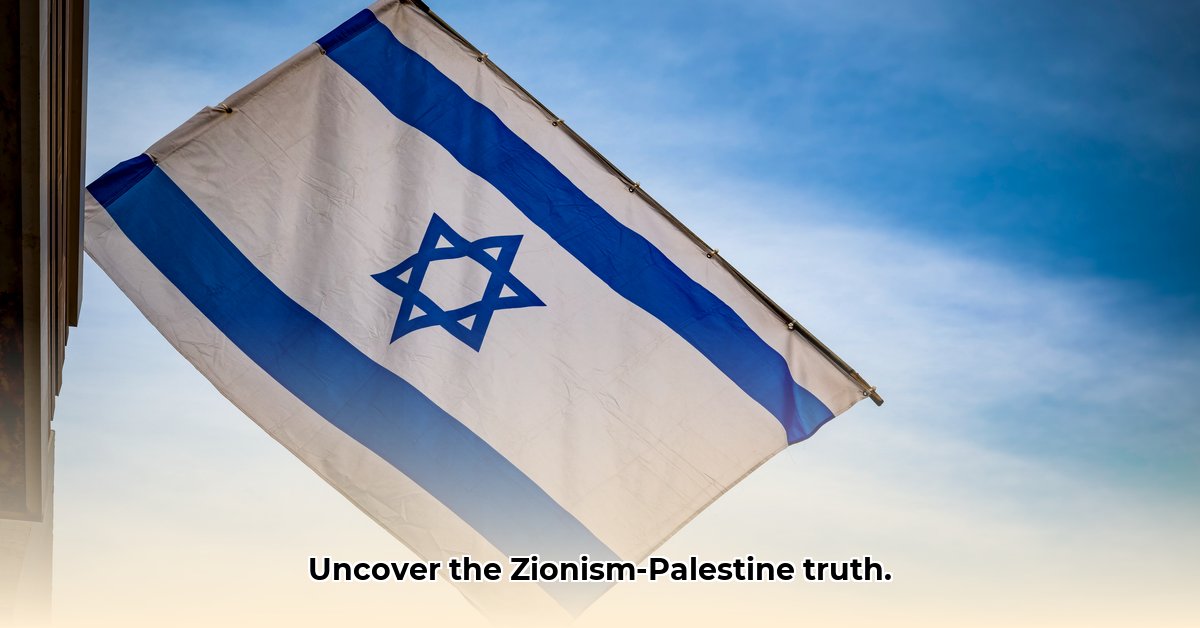
Understanding Zionism: A Historical Journey
Ag shame, the story of Zionism – the movement to establish a Jewish homeland in Palestine – is far from straightforward. It's a complex tapestry woven with threads of hope, aspiration, conflict, and enduring struggle, a narrative deeply intertwined with the ongoing Israeli-Palestinian conflict. This isn't just a dry recitation of facts; it's a story about people, their dreams, and the land they call home. Let's unpack it, tjop!
The Genesis of Zionism: Seeds of a Movement
Imagine late 19th-century Europe, a time marked by rampant antisemitism and rising nationalist sentiments. This volatile mix provided fertile ground for the Zionist movement. Theodor Herzl, often hailed as the "father of Zionism," articulated this burgeoning desire in his seminal work, Der Judenstaat (The Jewish State), envisioning a haven where Jews could live free from persecution and self-determination. But was escape from persecution the sole driving force, or were there other, more complex motivations at play? This remains a subject of ongoing historical debate. A crucial question to ponder is: Could Zionism have unfolded differently, had the socio-political climate of Europe been less hostile towards Jewish communities?
Palestine: A Land with a History – and Competing Claims
Herzl's vision focused on Palestine, a land already teeming with diverse communities, each with its own rich history and deeply rooted sense of belonging. This is where the inherent conflict began. The Zionist project directly collided with the aspirations of the Palestinian people, a clash that remains at the core of the present-day conflict. How, one might ask, could the desire for a Jewish state be reconciled with the rights and needs of the existing Palestinian population? This is the million-rand question, one that continues to evade a definitive answer. Is it possible, for example, to objectively weigh the historical claims and grievances of both sides to the conflict?
The Balfour Declaration: A Promise and its Pitfalls
The Balfour Declaration of 1917, a British promise to facilitate a "national home for the Jewish people" in Palestine, proved to be a pivotal yet problematic document. While seemingly supportive of Zionist aspirations, its ambiguity regarding the rights of the existing Palestinian population sowed the seeds of future conflict. The vagueness of the declaration – its lack of clarity regarding Palestinian rights – remains a source of ongoing contention. What, one might ask, were the practical implications, both intended and unintended, of this seemingly hopeful declaration? How could any such statement fairly address the concerns of both sides without favouring one above the other?
1948: A Year of Creation and Catastrophe
The year 1948 marked a watershed moment. The establishment of the State of Israel was a triumph for the Zionist movement, but concurrently a profound tragedy unfolded for the Palestinian people. The displacement of a significant portion of the Palestinian population – an event known as the Nakba ("catastrophe") – remains a deeply sensitive and politically charged issue. Precisely how many Palestinians were displaced in 1948 and through what series of events? This is a question that needs continued historical investigation. The debate continues, making impartial analysis all the more crucial.
Internal Divisions within Zionism: A House Divided?
It’s vital to remember that Zionism wasn’t a monolithic entity. Various groups, each with its own vision and approach, existed within the movement. From religious to secular, socialist to revisionist Zionists – each held unique beliefs and agendas, often leading to significant internal conflict. This internal divergence continues to influence Israel’s political landscape. How, one might reasonably ask, did these internal divisions within the Zionist movement affect its external interactions and the larger conflict?
The Ongoing Conflict: Navigating the Future
The Israeli-Palestinian conflict persists to this day, a testament to the deep-seated issues that remain unresolved. The occupation of Palestinian territories, the construction of settlements, and the ongoing struggle for self-determination fuel cycles of violence and distrust. These are deeply interconnected problems, making a simple solution extremely elusive. What strategies, realistically, could be implemented to foster effective dialogue and build bridges between these warring factions? How can we assess the validity and feasibility of each strategy and the potential outcomes of each?
Stakeholders and Their Perspectives
Understanding the diverse perspectives is key. Each stakeholder carries its own set of goals and challenges:
| Stakeholder | Short-Term Goals (0-1 year) | Long-Term Goals (3-5 years) |
|---|---|---|
| Israeli Government | Maintaining citizen safety, managing internal politics | Lasting peace, addressing population growth, strengthening international ties |
| Palestinian Authority | Negotiating statehood, infrastructural rebuilding | Full independence, securing Palestinian rights, internal reconciliation |
| International Community | Promoting peace, providing humanitarian aid | A just solution, addressing conflict roots, upholding international law |
This exploration serves as a starting point. The story of Zionism and the Israeli-Palestinian conflict is still unfolding, demanding continuous engagement, difficult conversations, and a commitment to uncovering uncomfortable truths. It's a long and challenging road, but essential for building a future where all feel safe and valued.